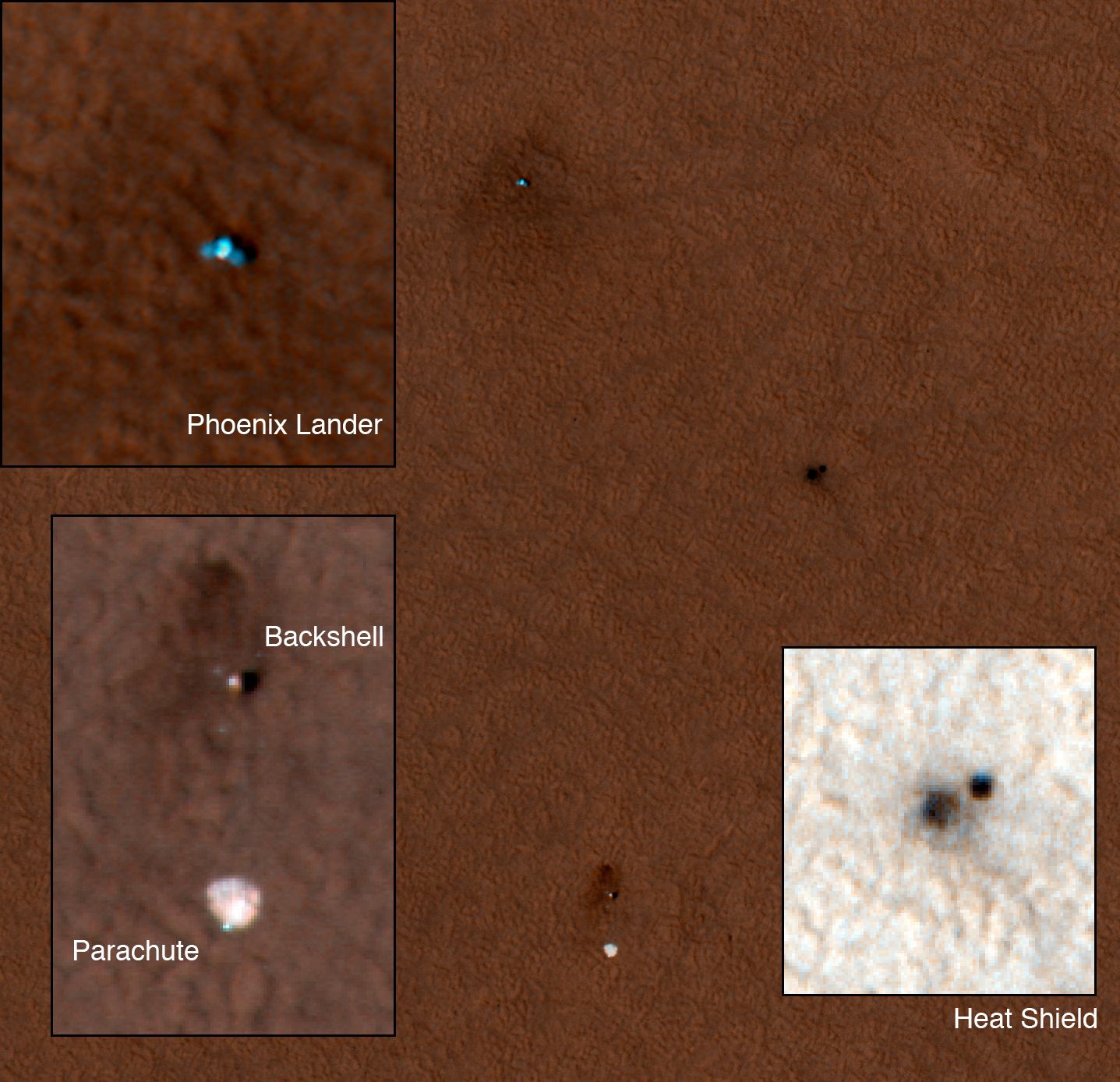Phoenix Lander on Mars
 This image of the Phoenix Lander on the surface of Mars was taken with the HiRISE camera aboard the Mars Reconnaissance Orbiter about 22 hours after Phoenix landed on the surface. The insets are closeups that are labeled and show not only the lander, but also the affects the landers rockets had on the surface surrounding the lander and also the heatshield and the backshell and parachute nearby on the Martian surface! You can even see some details in the parachute! Click on the image to see the full resolution version or visit the HiRISE website for this image for more details..
This image of the Phoenix Lander on the surface of Mars was taken with the HiRISE camera aboard the Mars Reconnaissance Orbiter about 22 hours after Phoenix landed on the surface. The insets are closeups that are labeled and show not only the lander, but also the affects the landers rockets had on the surface surrounding the lander and also the heatshield and the backshell and parachute nearby on the Martian surface! You can even see some details in the parachute! Click on the image to see the full resolution version or visit the HiRISE website for this image for more details..I'm not sure which direction the lander came in from, but it was probably the bottom right, though I also suspect that it might be the bottom left since the heatshield appears to have bounced towards the upper right. It looks like the wind may be blowing towards the bottom or bottom right since the parachute appears to have pulled the backshell towards the bottom and the chute itself is laying in that direction. Also, there appears to be a little wispy dark trail to the bottom right from the heatshield impact site. And my friend Joe who works on HiRISE says they should get some better images soon taken from closer range.
Labels: HiRISE, Mars Reconnaissance Orbiter, Phoenix Lander






